Casa Rosada, Buenos Aires
For you who love to live in a big city, you probably would love Buenos Aires. In my case, I was a country girl born in a big city—Miami—through no fault of my own. I never took to the city and have loved the smaller towns where I lived in later years.
But even I love Buenos Aires. I think most people do who come here. We would all be hard pressed to tell you exactly why. There is an excitement about B.A. Some people say that it is the “chaos” here that is strangely attractive–that it is never boring. It almost seems like there could be some truth to that.
Aside from the emotional attachment, there is the fact that, as in most large cities, everything is here. Beaches, horse races, opera, the playhouse. There are art and other museums all over the city and most are free—or very close to it. The weather is very similar to that of Florida, except that there is no rainy season here. We have nice, sunny weather for a while, then a day or two of rain, then good weather again—and it repeats the performance about the same all year round.
One puzzling fact between Argentina and Uruguay. We find the weather more comfortable in Buenos Aires. It is winter here, and right now the temperature in Buenos Aires is 55 degrees. But just across the river in Montevideo it is 41 degrees.
Today we are going to visit the Casa Rosada—which is, translated, the Pink House. It is Argentina’s version of the United States’ White House. It is one of the seats of government in Argentina and is where the President arrives to work every morning. The pink house has quite a history, with all the chaos that surfaces periodically in Argentina, with one president Fernando de la Rua once air-lifted off the roof by helicopter while angry Argentines rioted on the ground below. But today all is calm and beautiful in Buenos Aires.
The construction of the Casa Rosada began in 1882 by President Julio Roca. We have President Domingo Sarmiento to thank for adding the pink color.
There are free tours of the Casa Rosada on weekends and holidays. Although we don’t get overly excited about visiting government facilities, there is so much history connected with the Casa Rosada that it is impressive to actually be where it all happened.
Argentina has everything it needs to be a prosperous world leader. Rich in natural resources, incredible beauty, rich soil, educated people, plenty of space–Argentina is underpopulated, not overpopulated. In fact, there is fear in Argentina of losing the southern part of the country because of lack of sufficient population. The country has a young population. The difference between Buenos Aires and South Florida population is obvious. Just standing on a street corner in Buenos Aires, waiting to cross the street, you notice that almost everyone in the crowd is young. Unlike the huge population of retirees in the United States.
But there is a sad side to Argentina. In the 1930’s this country produced more cattle than the States and has the capability to feed much of the world. It is reported that during World War II, Britain imported one-fourth of their food from Argentina.
In fact, history tells us that Argentina was second economically only to the United States in the 1930s and some think that Argentina may actually have exceeded the United States in wealth since Argentina had no war debt. But now this beautiful, rich country is classified as a Third World country.
So what happened? In two words: bad government. We may go deeper into Argentina’s history sometime, but for now we find ourselves making comparisons with the fiscal policies of the U.S. and those of Argentina.
All of this history ties in with the beautiful Casa Rosada since so much of it originated within those walls. And so off we go to see where it all came about–the history of this country that we have come to love!
The statue of Manual Belgrano keeps watch over the entrance to the Casa Rosada. Belgrano was an economist, politician, lawyer and a military leader who designed the Argentina flag.
This is the room that is used especially for receiving dignitaries and world leaders.
The Casa Rosada is designed to provide a residence for the president, but presidents often choose not to live here. This is the case with the current President Cristina Kirchner, who maintains an apartment in a location away from the center of the city. But here we have rooms designed for living.
Here is another.
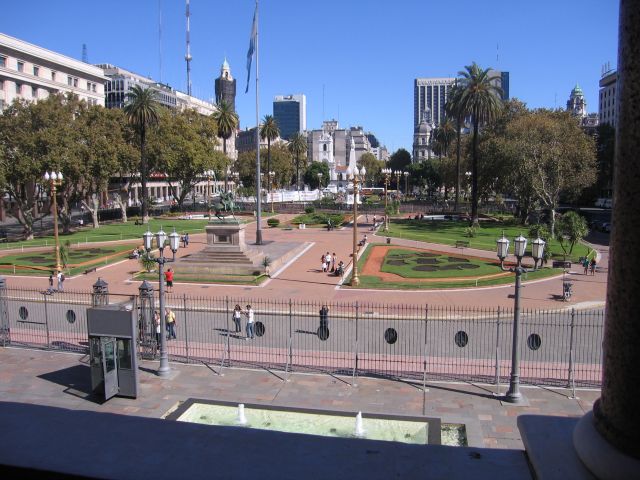 Here is the view of the Plaza de Mayo from the famous balcony of the Casa Rosada.
Here is the view of the Plaza de Mayo from the famous balcony of the Casa Rosada.
Well, at least this time we picked up a little history of Argentina. Now we are off for lunch to Cafe Tortoni’s, just a few blocks away. It was fun having you along. See you next week .
Arlean
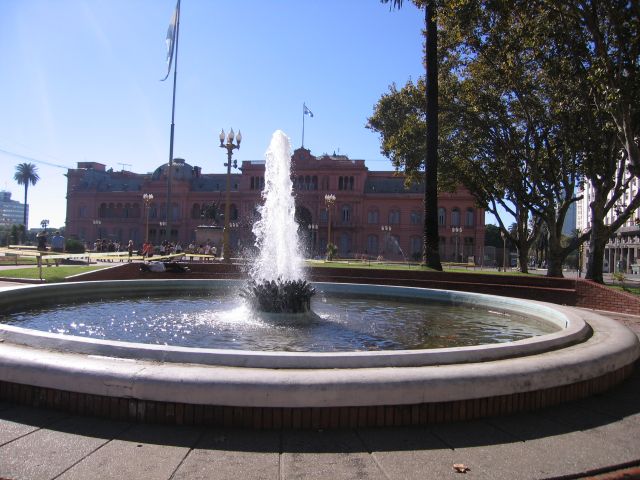
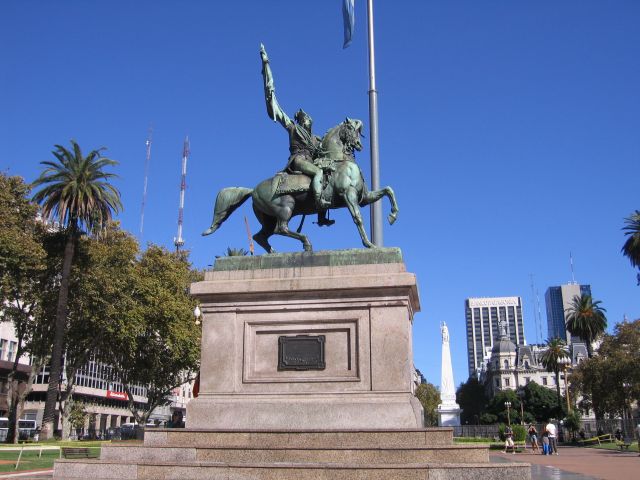
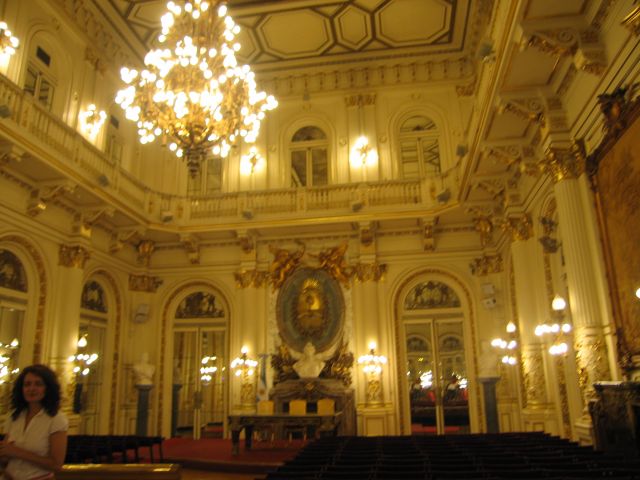
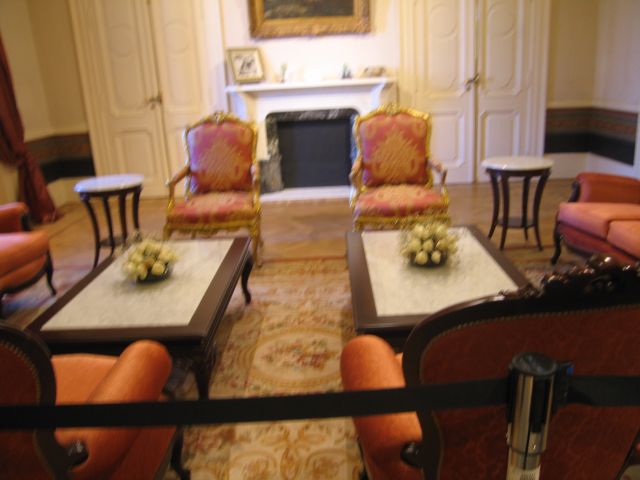
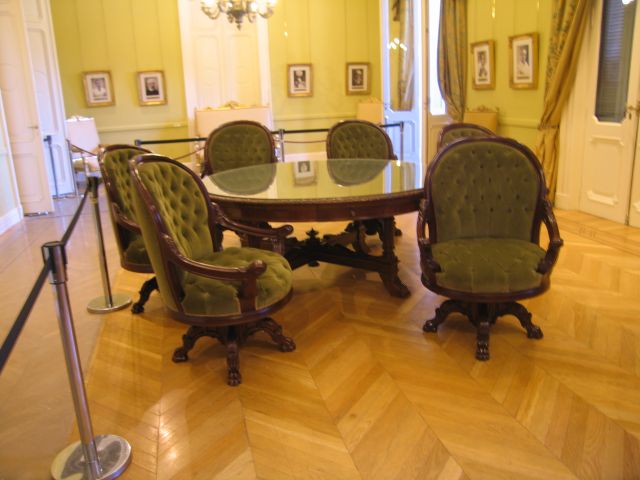



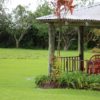
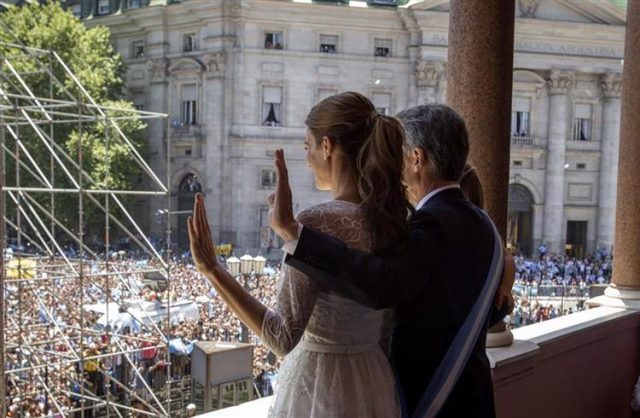
Leave a Reply